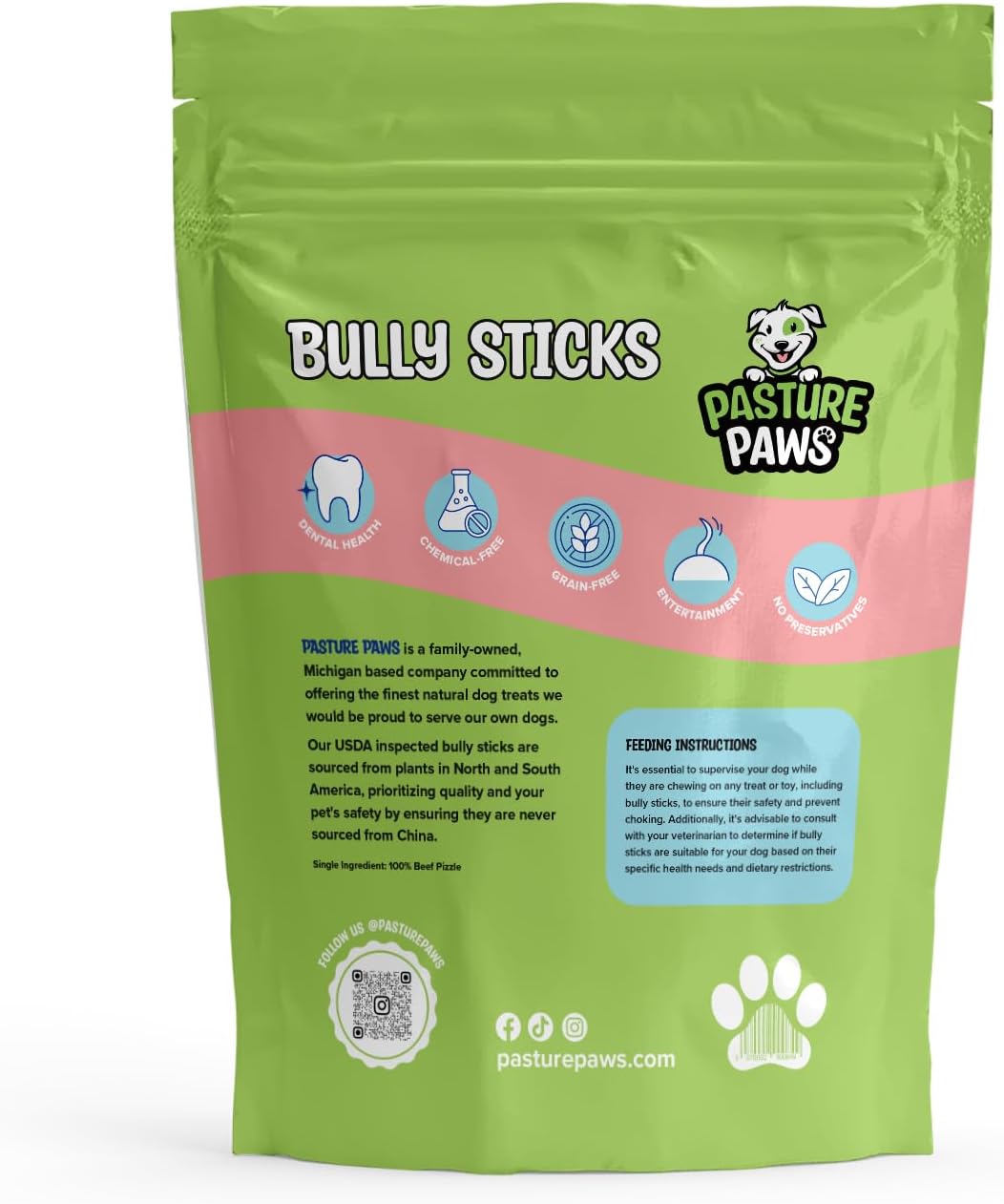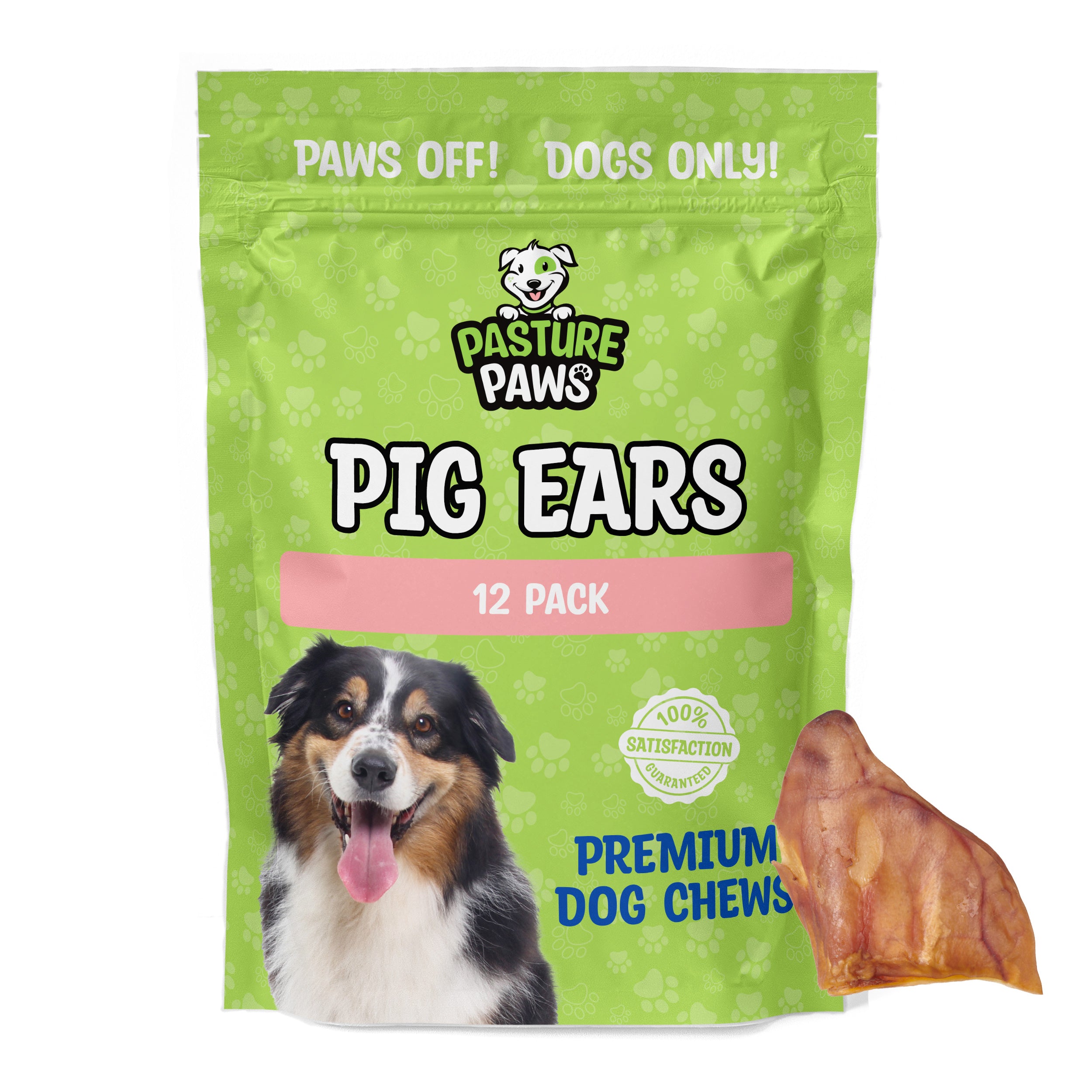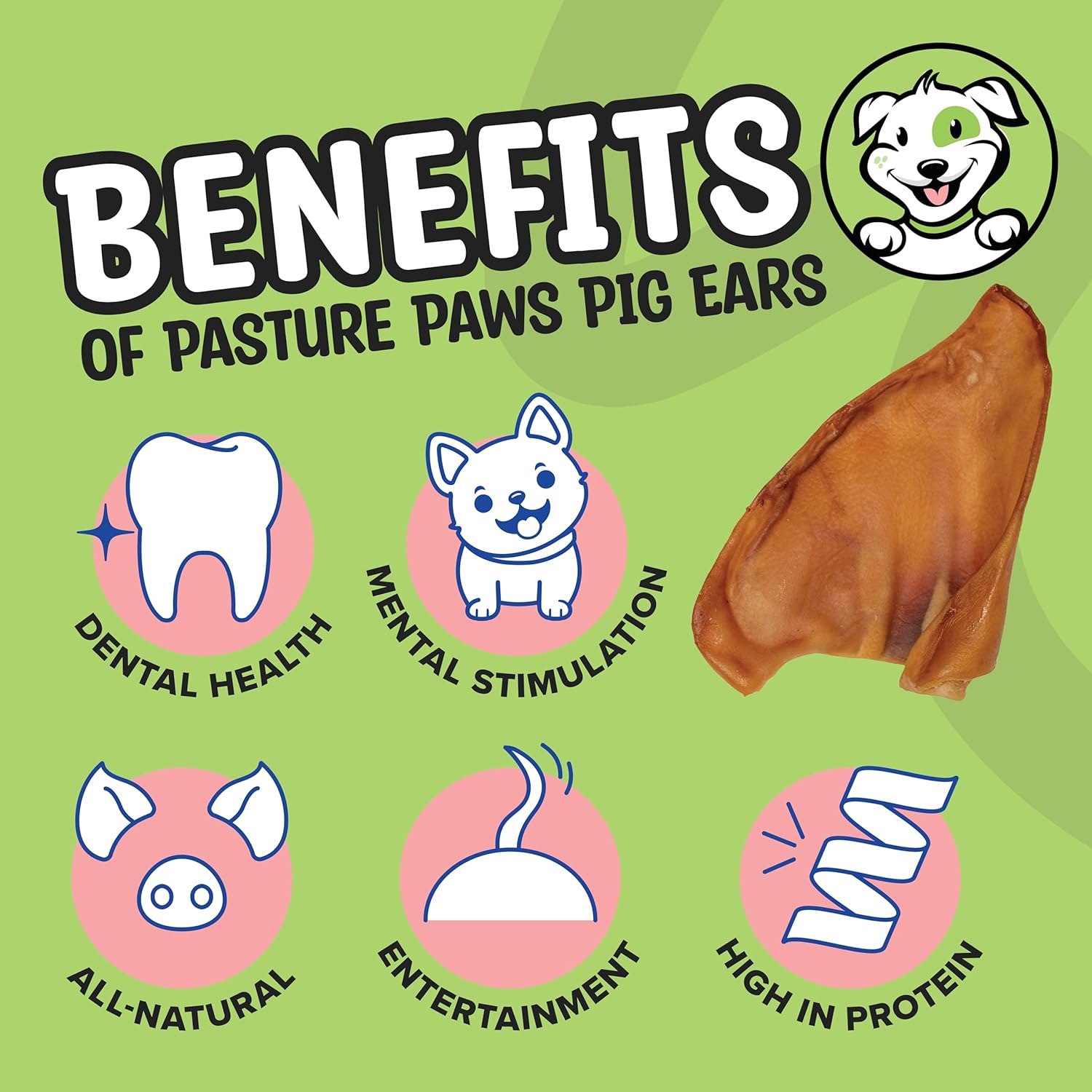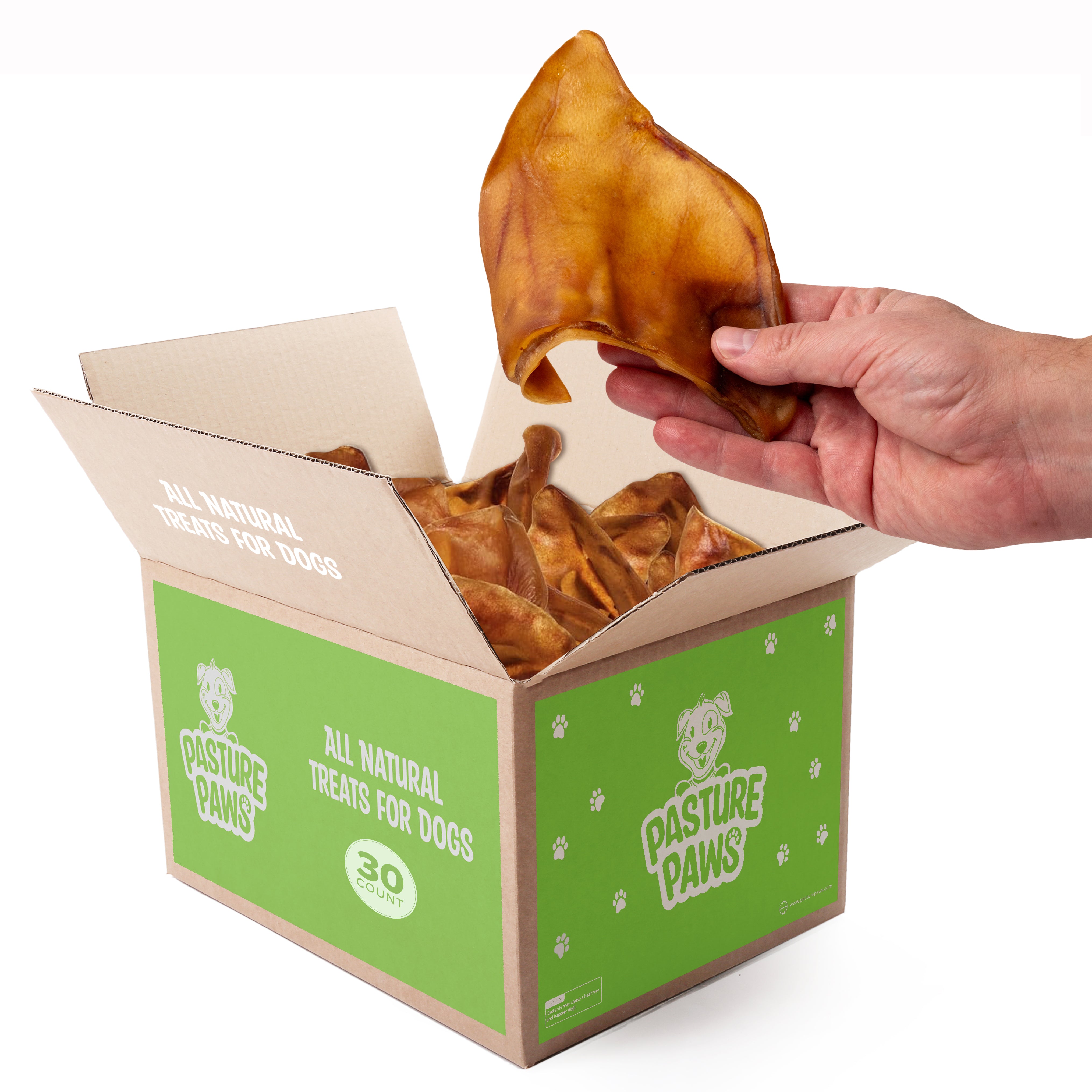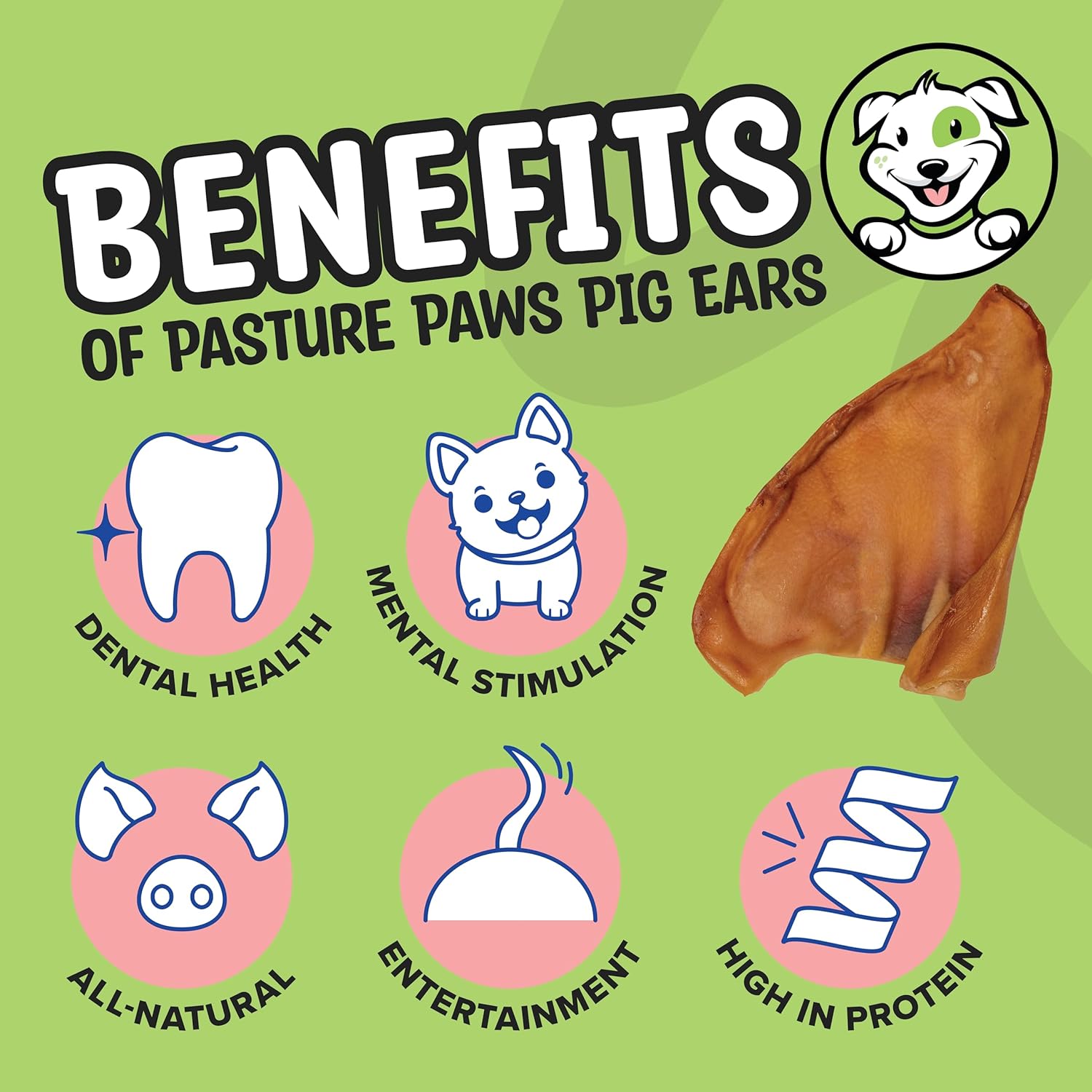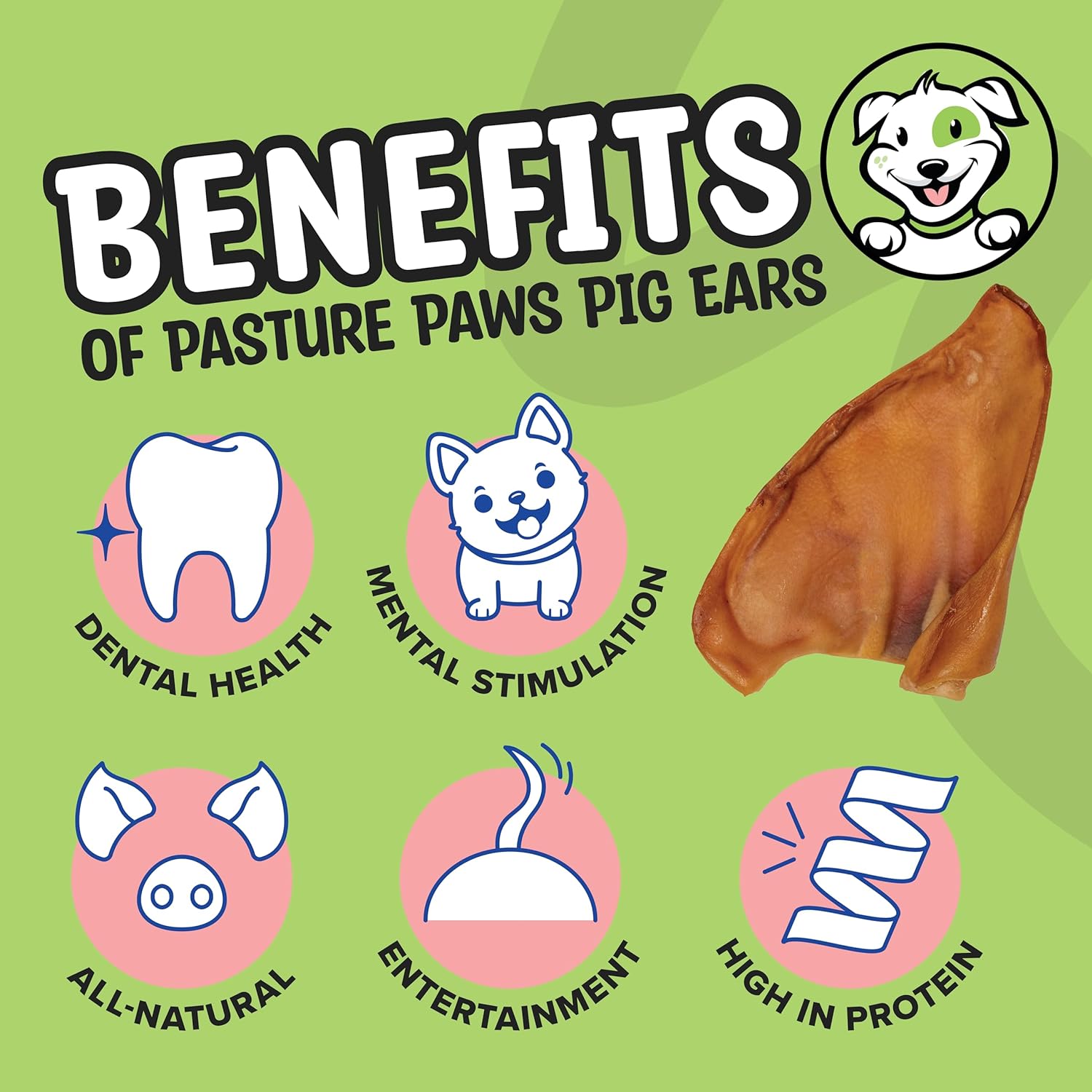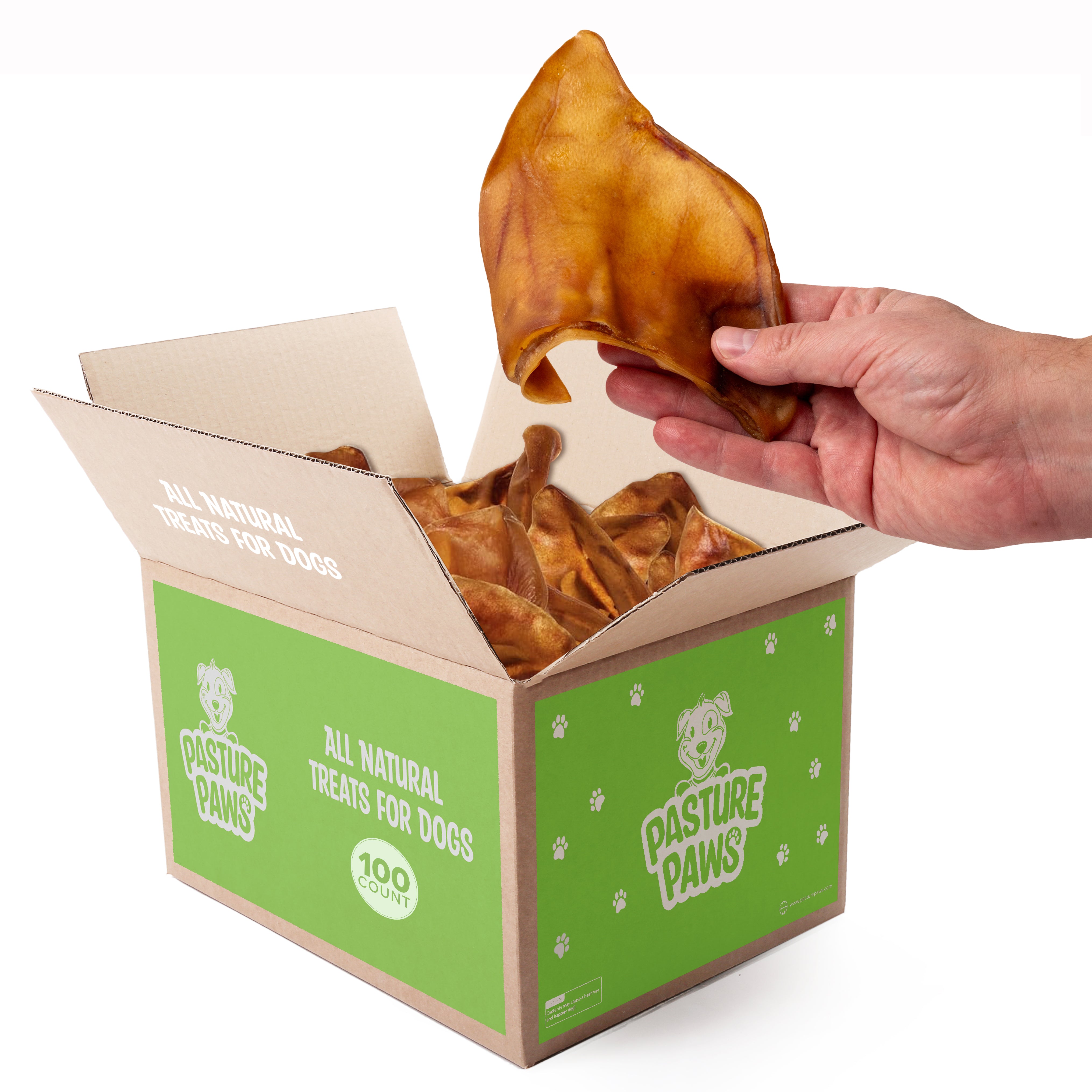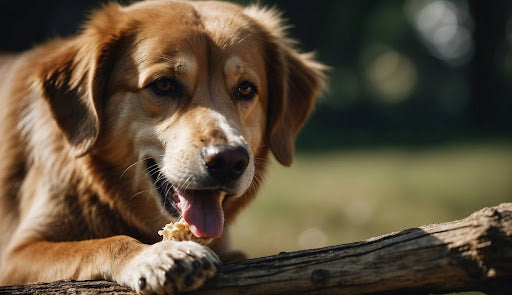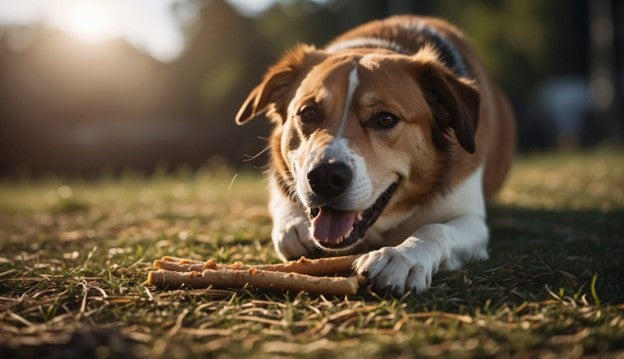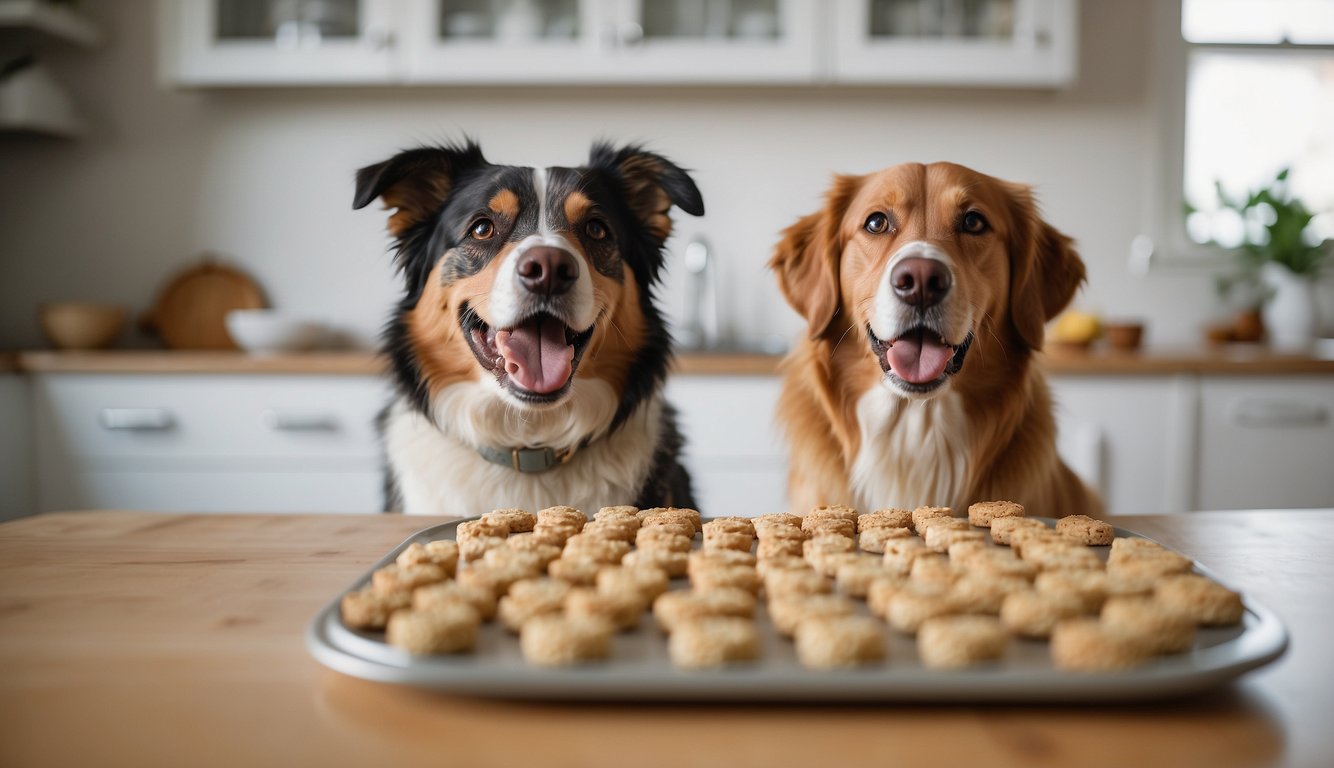When you give your dog a shin bone to chew on, it's important to consider how long they should chew.
While it might seem harmless to let them chew for hours, there are important factors to think about.
Understanding your dog's chewing habits and what they prefer will help you decide how long they should chew on a shin bone.
Choosing the right type of bone is also crucial for your dog's safety and enjoyment.
Make sure to follow safe chewing practices to prevent any health issues or injuries.
Key Takeaways:
- Pay attention to your dog's chewing habits to determine the appropriate chewing time.
- Select a bone that is safe and enjoyable for your dog.
- Always practice safe chewing habits to keep your dog healthy and happy.
Understanding Dog Chews and Bones

When you're picking dog chews and bones, there are lots of choices to suit different preferences. For example, Beef Trachea Dog Chews are natural and chewy, which dogs love for their taste and texture. Cow Hooves are tough and last a long time, great for dogs that like to chew. Beef Knee Caps are meaty bones that dogs find satisfying and fun to chew on.
It's important to understand these options so you can give your dog something safe and healthy. Each type of chew serves a different purpose, like keeping teeth clean, satisfying a dog's chewing habits, or just being a yummy treat. Knowing these benefits helps you choose what's best for your
Types of Bones and Chews
There are several types of bones and chews that you can give to your dog, including natural bones, rawhide, and synthetic chews.
Natural bones, such as beef, pork, and lamb bones, are a great source of protein and fat for your dog. However, it's important to ensure that the bones are safe for your dog to chew on and that they're not too small, as they can pose a choking hazard.
Meanwhile, rawhide chews are a popular option for many dog owners, as they're long-lasting and can help promote dental health. However, it's important to choose high-quality rawhide chews that are free from harmful chemicals and additives.
Lastly, synthetic chews, such as nylon bones, are also a popular option for many dog owners.
They're durable and long-lasting, making them a great choice for aggressive chewers. However, it's important to monitor your dog while they're chewing on synthetic chews, as they can break into sharp fragments that may injure your dog's mouth, throat, or intestines.
Benefits of Chewing for Dogs
Chewing is a natural behavior for dogs, and it provides several benefits.
Chewing on bones and chews can help promote dental health by removing plaque and tartar buildup. It can also help satisfy your dog's natural urge to chew and keep them mentally stimulated.
In addition, chewing on bones and chews can provide your dog with important nutrients, such as protein and fat.
However, it's important to choose bones and chews that are safe and appropriate for your dog, as some types of bones and chews can pose a choking hazard or cause digestive issues.
Choosing the Right Bone

By Dog Age and Size
The size and age of your dog play a crucial role in determining the appropriate bone size.
Smaller dogs and puppies should be given small bones, while larger dogs can handle bigger bones. A good rule of thumb is to choose a bone that is slightly larger than your dog's mouth.
For puppies, it's best to stick with softer bones, such as beef shank bones or marrow bones. These bones are easier for puppies to chew and won't damage their developing teeth.
As your puppy grows, you can gradually introduce harder bones, such as femur bones.
For adult dogs, raw bones are a great option.
Raw bones are softer than cooked bones, making them easier to chew and digest. They also provide your dog with essential nutrients, such as calcium and phosphorus. However, not all bones are safe for dogs to chew on. We'll discuss this in more detail in the next subsection.
By Bone Type and Size
When it comes to bone type and size, there are a few things to keep in mind.
First, it's important to choose a bone that is appropriate for your dog's size and chewing habits. If your dog is an aggressive chewer, you may want to choose a larger bone to prevent choking hazards.
Second, make sure to choose a safe bone. Cooked bones, for example, are off-limits. Cooked bones can splinter and cause serious damage to your dog's digestive system.
Finally, consider the type of bone. Marrow bones are a great option for dogs who love to chew. These bones are filled with delicious marrow that your dog will love. Femur bones are also a popular choice, as they are large and durable.
Safe Chewing Practices

When giving your dog a bone to chew on, it's important to follow safe chewing practices to ensure their safety and well-being. Here are some guidelines to keep in mind:
Supervision and Setting
Always supervise your dog when they are chewing on a bone.
This will allow you to monitor their behavior and ensure they are not at risk of choking or injuring themselves.
Additionally, choose a safe setting for your dog to chew on their bone. Avoid hard surfaces that could cause dental damage or injury if your dog drops the bone.
Duration and Frequency
The duration and frequency of bone chewing should be limited to prevent any potential health risks.
The length of time your dog chews on a bone should be no longer than 10-15 minutes per session.
Additionally, limit the frequency of bone chewing to no more than once a week.
Over-chewing on bones can lead to dental fractures, gastrointestinal upset, and other health issues.
Behavioral Considerations

When giving your dog a shin bone to chew on, there are some behavioral considerations you should keep in mind. Here are some things to consider:
Resource Guarding and Aggression
Resource guarding is a common behavior in dogs, where they become possessive of certain items, such as food, toys, or bones.
If your dog is prone to resource guarding, it's important to monitor their behavior when they are chewing on a bone.
Some signs of resource guarding include growling, snapping, or biting when someone approaches them while they are chewing.
To prevent resource guarding and aggression, it's important to establish good behavioral training early on.
Teach your dog to associate positive things with people approaching them while they are chewing, such as giving them treats or praise.
You can also try to distract your dog with mental stimulation activities, such as puzzle toys, to keep their mind off of the bone.
If your dog does show signs of resource guarding or aggression while chewing on a bone, take the bone away and seek the help of a professional dog trainer or behaviorist.
They can help you work with your dog to overcome these behaviors and ensure a safe and enjoyable chewing experience for both you and your dog.
Conclusion
Understanding how long your dog should chew a shin bone is crucial for their safety and well-being. By considering your dog's chewing habits, choosing the right bone type, and following safe practices, you can ensure a healthy and happy chewing experience. Remember, supervising your dog, limiting chewing time, and addressing behavioral considerations are key to keeping your furry friend safe and content.
Ready to find the perfect chew for your pup? Explore our carefully chosen stuffed shin bones and other nutritious treats for your beloved companion at Pasturepaws. Give your dog the best—explore our selection today!
Frequently Asked Questions
How can I ensure my dog gets a balanced diet with bone chewing?
To ensure your dog gets a balanced diet while enjoying bone chewing, provide bones as an occasional treat rather than a main food source. Complement the bone chewing with high-quality dog food that meets all their nutritional needs, including proteins, fats, vitamins, and minerals. Consult your veterinarian for personalized dietary recommendations and to ensure the bones are appropriate for your dog's health and size.
What are the signs of nutritional deficiencies from improper bone chewing?
Signs of nutritional deficiencies from improper bone chewing may include weakened teeth or jaw, digestive issues such as constipation or diarrhea, and possible malnutrition symptoms like weight loss or lethargy. It's important to monitor your dog's health closely and consult a veterinarian if you notice any concerns.
How do I know if a bone is contributing to my dog's diet positively?
You can assess if a bone is contributing positively to your dog's diet by observing their overall health and well-being. Positive signs include improved dental health, satisfaction from chewing, and balanced digestion. Additionally, your veterinarian can monitor your dog's weight and overall condition to confirm the bone's benefits.
Can bones help prevent bad breath in dogs?
Yes, chewing on bones can help prevent bad breath in dogs by promoting dental health. The mechanical action of chewing helps remove plaque and tartar buildup, which are common causes of bad breath. However, it's important to choose bones appropriate for your dog's size and dental health to avoid any issues. Regular dental check-ups with your veterinarian are also recommended.

